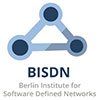
Keep up to date with our innovative initiatives.
Sign up here

Started at: 01-01-2014
Ends on: 30-06-2017
Budget: 3,337,000 €
Areas: RINA
PRISTINE will take a major step forward in the integration of networking and distributed computing. This will be accomplished by researching sophisticated policies for congestion control, distributed resource allocation, efficient routing, authentication, authorization, encryption and multi-homing.
The Internet as the global communications infrastructure has been successful in shaping the modern world by the way we access and exchange information. The Internet architecture originally designed in the 1960s has been supporting a variety of applications and offering a number of services till now but emerging applications demand better quality, programmability, resilience and protection. Any alterations to the Internet architecture have become restricted to simple incremental updates and plug-ins instead of radical changes by introducing new solutions.
RINA, the Recursive InterNetwork Architecture, is an emerging clean-slate programmable networking approach, centring on Inter-Process Communication (IPC) paradigm, which will support high scalability, multi-homing, built-in security, seamless access to real-time information and operation in dynamic environments. The heart of this networking structure is naturally formed and organised by blocks of containers called “Distributed Information Facilities – DIFs” where each block has programmable functions to be attributed to as they required. A DIF is seen as an organizing structure, grouping together application processes that provide IPC services and are configured under the same policies. Virtualization is a fundamental attribute of the architecture itself. Based on the above fundamental aspect, PRISTINE intends to:
– Design, develop and implement the innovative internals of this clean-slate architecture that include the programmable functions for: security of content and application processes, supporting QoS and congestion control in aggregated levels, providing protection and resilience, facilitating more efficient topological routing, and multi-layer management for handling configuration, performance and security.
– Demonstrate the applicability and benefits of this approach and its built-in functions in use-cases driven by the end-users, service providers and equipment vendors in the consortium. This will ensure that the applications and tools we develop will be deployable by providers, and have a greater potential for future exploitation.
PRISTINE will not be developing a RINA prototype from scratch, but adopt the prototype of RINA over Ethernet and IP under development by the FP7 IRATI project as the basis for its implementation work. The objectives of PRISTINE are very complementary to those of IRATI, which is just focused on developing a basic RINA implementation. These objectives will be the baseline of the project’s work:
– RINA Software Development Kit: making the network programmable
– Programmable congestion control for effective data transfer
– Distributed resource allocation strategies to support multiple levels of service
– Topological addressing as an enabler of efficient routing
– Authentication, access control and encryption for secure DIFs
– Security coordination within a DIF: self-management, attack identification and mitigation
– Multi-homing and self-healing as the basis for resilient networks
– Multi-layer DIF Management System (DMS) for integrated network management
– Trials of the project use cases: deploying PRISTINE’s solutions in the real world
– RINA Simulator to understand the behaviour of extensions at scale
PRISTINE is returning to the foundational essence of networking, a revolutionary approach, as we believe that the current re-engineering approach is maintaining the inherent limitations of the current Internet. In taking the revolutionary approach PRISTINE takes up the challenge of a forward looking network architecture as it integrates communication, computing and storage resources in order to support cloud computing, networked data processing and limited resources of smart client devices.
The PRISTINE project will apply its approach to the SDN market segments of ”types of solutions” and ”end-user” markets, thus giving the project the potential for commercial and exploitation success via a number of different avenues. The solutions’ segment comprises of network infrastructure (switching, controllers), cloud virtualisation & control layer, and network virtualisation services; whilst the end-user markets include network service providers, cloud service providers, and enterprise data centers.
How the 5G programme can build on the results of the project
PRISTINE does not directly address 5G wireless access networks, but instead proposes a broader evolution of network architecture that can also encompass its mobile counterpart. The hardest challenges of the future 5G standard are not in addressing specific radio access technologies, but on defining an adaptive network architecture that is capable of supporting a wide range of device capabilities, multiple connectivity models and heterogeneous application areas with their specific requirements. RINA fits very well this role since each DIF in the architecture can be fully customized to the capabilities of the different devices and/or the requirements of different application areas (such as e-health, self-driving cars, consumer electronics, home automation, content distribution, ad-hoc mobile networks, etc.).
















This project has received funding from the European Union’s Seventh Framework Programme for research, technological development and demonstration under grant agreement No. 619305.